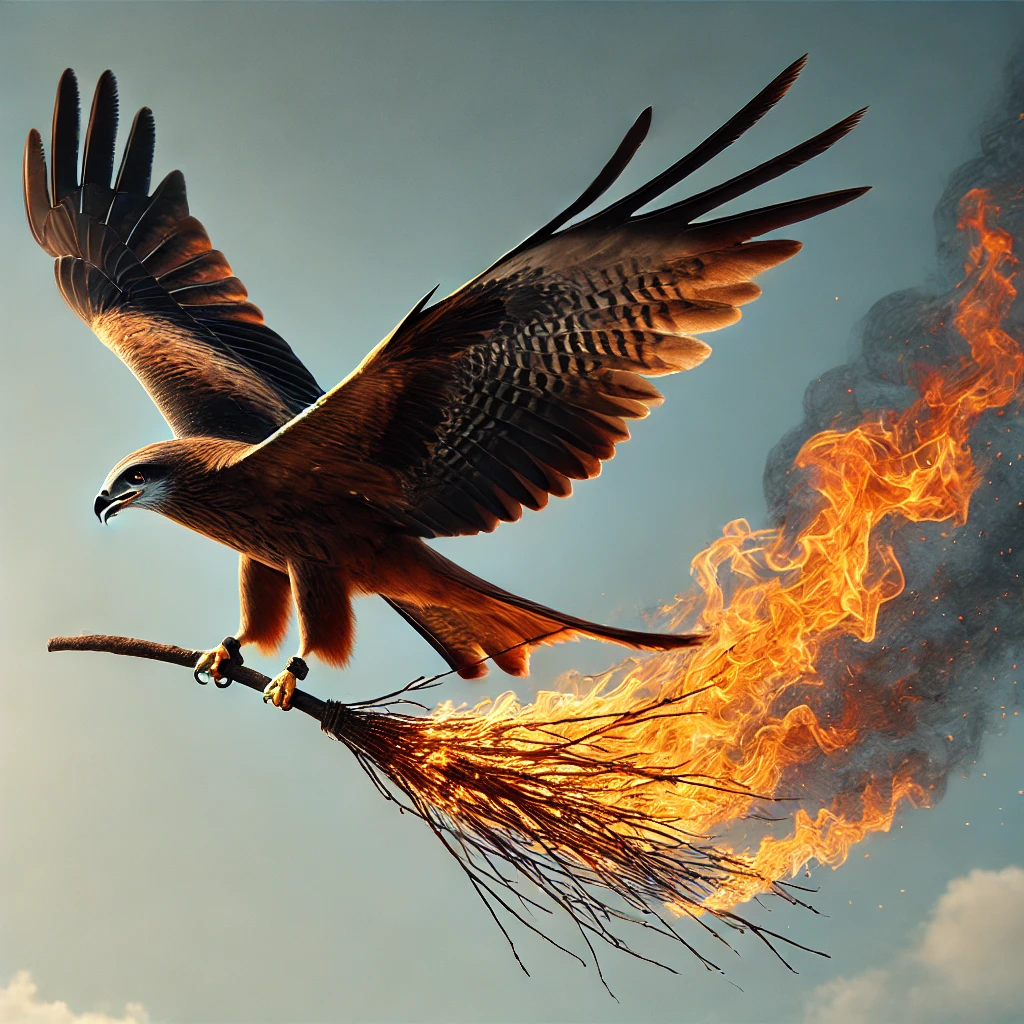Raptors of the Flame
We didn't start the fire....but we're definitely going to use it

Birds of prey are fascinating in many ways. They have specially adapted eyes for acute vision that helps them spot prey, they have specially adapted bodies (sharp talons, broad wings, long tails, etc.) for controlled flight, and a wide variety of sophisticated techniques to hunt prey. This last one, is particularly interesting. The stereotypical raptors e.g. eagles, condors, soar the skies and ride thermal currents searching for prey on the ground. The famous peregrine falcon dives at record speeds to hunt other birds. Kestrels hover over a specific patch of land for upto a minute at a time, before diving to catch their prey.
But the firehawks (black kites, whistling kites and brown falcons) in Australia smoke all competition. These raptors deliberately set fires in the Australian bush to chase small mammals and reptiles into the open, to make an easy feast. Unusually, these incidents of arson seem to be coordinated i.e. the hawks apparently work in flocks to set these fires, and then, it’s a nice barbeque party for every bird involved. We’ve known about this behaviour for a very long time – firehawks are cultural lore for the Aboriginal people in Australia, and some of their stories even posit that man learned to use fire from these hawks. For instance, Aboriginal “Dreaming” ceremonies celebrating their ancestral spirits shaping the land and creating life, is deeply connected to the knowledge of firehawks.
There have been mentions of kites and hawks gathering near active fires to forage for prey pretty much everywhere kites and hawks are indigenous: Brazil, Eat Africa, USA. However, in Australia these birds seem to go one step further, and actually cause the fires to spread. They don’t start the fire (that we know of, yet), but they have been observed to pick up burning twigs in their talons or beak, and drop them in unburnt areas upto a kilometer away.
What is really astonishing though, is that there has been no systematic study of this pyromaniacal behaviour. The only information we have is from eyewitness accounts: the last paper published on this subject seems to be in 2018, where the authors undertake a heroic effort to document sightings and reports of firehawks setting fires. It’s also not clear why no one is studying it – no one wants to be bird-watchiing in the middle of a raging wildfire maybe1?. When the paper was first published in 2018, the topic was hotly debated: were the birds deliberately using fire, or were they just diving to hunt prey and grabbing burning twigs instead (that they promptly dropped, because it’s, you know, on fire)? Given that the evidence for it is purely anecdotal, from marginalized groups of people, perhaps we are unwilling to believe it? The behaviour is mostly likely opportunistic i.e. the birds do it when the chance presents itself, so maybe it’s very hard to reliably observe?
If true however, it seems that another bastion of our collective identity as Homo sapiens – the ability to manipulate fire – is set to fall. We are suprised over and over when animals display intelligence and behaviour that would be considered “human-like”. There was an uproar when Jane Goodall first discovered that chimpanzees use tools, and then we realized elephants could do it, and so could dolphins, and then octopuses…And now it seems, we should add firehawks to that list. It makes me wonder how much of the world we miss, or how many fascinating things we fail to see, simply because we are blind to what other creatures are capable of. In “An Immense World”, Ed Yong wrote, “..the act of contemplating the [sensory experience and environment] of another creature is so deeply human and so utterly profound. Our senses filter in what we need. We must choose to learn about the rest.” And I think we should definitely start with firehawks.
-
This seems like a flimsy excuse, though. Scientists are people who are literally killed by the thing they’re studying ↩